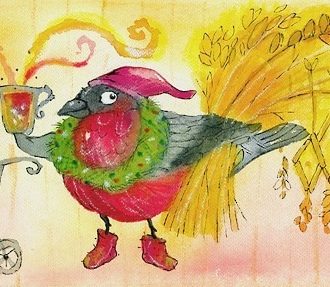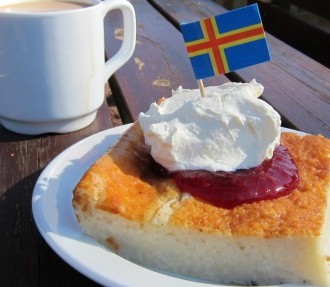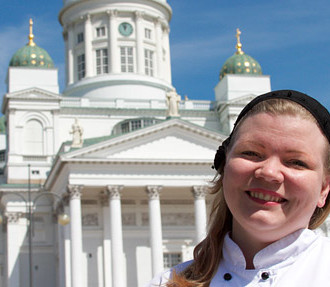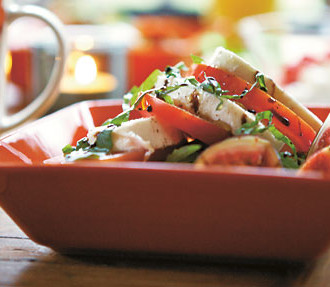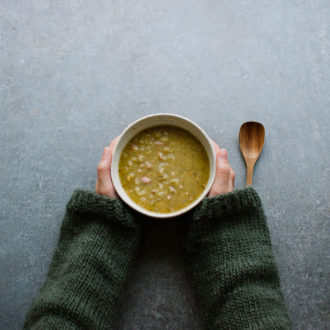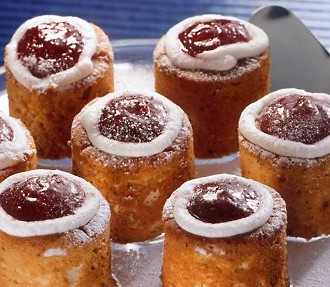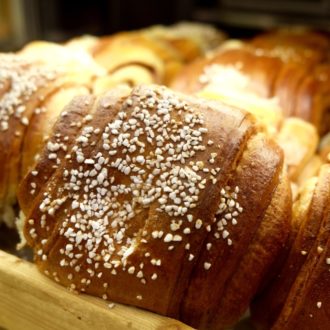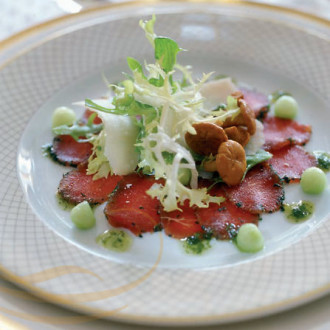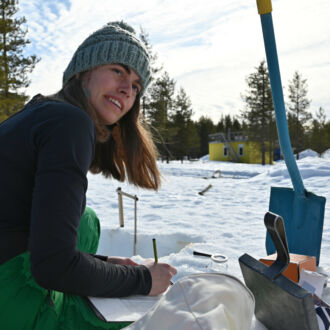During his career, Lepistö has had to think about the significance of Finnish Christmas cuisine more than most chefs in his country. Sometimes you have to go abroad to gain perspective.
After a decade at top Helsinki restaurants, he spent time as head chef at Finland’s permanent mission in Geneva, Switzerland and then its embassy in Moscow, Russia. After moving back to Helsinki with his wife and two children, Lepistö worked as executive chef at the landmark concert and conference centre Finlandia Hall for four years, and is now the head of quality and sustainability at a local restaurant company in the Finnish capital.
Distinctive approach
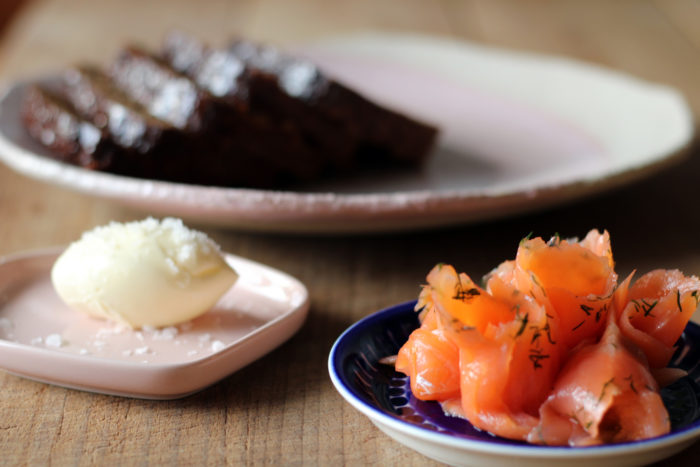
Lepistö’s malt bread builds on traditional archipelago bread, and, similarly, it tastes good topped with butter or salmon.Photo: Piritta Kaartio
“Usually the Finnish Christmas table is full of traditional food, which is normally quite rich and full-flavoured simple dishes,” says Lepistö. “For many generations, Christmas has been one of the biggest celebrations of the year, so families have put lot of effort into the feast.
“Because the festivities take place in the middle of winter, Finnish people have used ingredients that are available then, such as root vegetables and pickled and other conserved goods like mushrooms. The dishes are usually enriched with cream and butter. A traditional Finnish Christmas feast includes comfort food items that most Finns recognise from childhood, for example root-vegetable casseroles, fish dishes and rosolli beetroot salad.”
For ThisisFINLAND, Lepistö has chosen “recipes that maintain the spirit of the traditional Christmas dishes, but with my own kind of approach,” he says. “I wanted to keep the spirit, but make them more interesting and modern.”
Enjoying the holidays

Part of what makes Christmas special is “enjoying the memories of previous Christmases,” says chef Timo Lepistö.Photo: Piritta Kaartio
At the time of writing, the coronavirus situation does not necessarily allow families to celebrate together. “These recipes can also work wonderfully as gifts for friends and family,” says Lepistö. Or you can coordinate and “enjoy them together online during the holiday season, sharing the culinary experience even if you can’t physically eat at the same table.”
He says that the greatest thing about Christmas is “spending time with family and relatives [when social distancing recommendations are not in effect], and enjoying delicious food and other treats. I love to cook for the whole family and see their happy faces when we are enjoying dinner. Moreover, of course, seeing the excitement of the kids and enjoying the memories of previous Christmases.”
By ThisisFINLAND staff, December 2020
New angles on Christmas cuisine
(Recipes and descriptions supplied by Timo Lepistö)
Malt bread (also known as archipelago bread) seasoned with liquorice
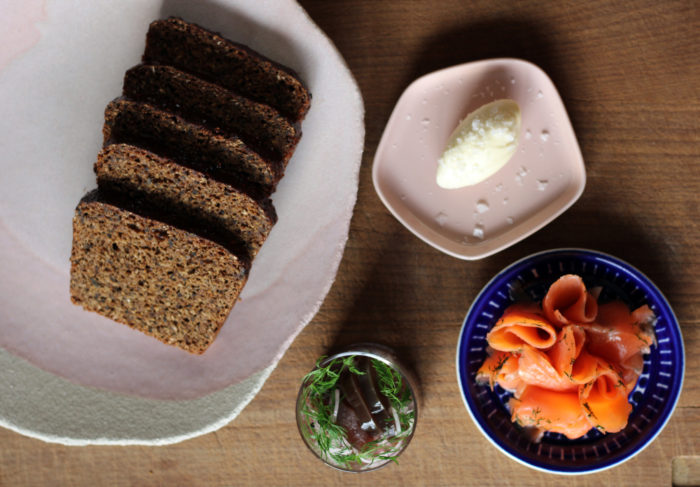
Dark malt bread can be enjoyed with butter or with fish toppings (or eggplant slices pickled as vegan “herring,” centre).Photo: Piritta Kaartio
This dense, malty, flavourful bread is a traditional specialty from the archipelago region. While working in Switzerland, I wondered if I could enhance its flavour, which I already loved. After a lot of testing, I realised that liquorice root worked sublimely with the traditional spices and enhanced the taste even more. Since then I have a tradition of baking the bread every holiday season.
The most amazing thing about it is the richness of its sweet dark syrupy taste. You can eat it throughout the year, but you’ll find it at most Christmas dinners. Usually it is eaten with cold fish dishes such as gravlax (cured salmon) or gubbröra (a topping made from anchovies and boiled eggs) but you can enjoy it simply with good quality salted butter, or with the leftover Christmas ham.
You can season this bread with salt only, or add fennel seeds and anise. I love anise flavours, which you can also find in fennel, dill and liquorice root. It tastes excellent with Finnish fish dishes. I wanted to enhance this taste to the maximum, so I use ground liquorice root for the recipe, as well as fennel seeds and anise.
- 2 dl crushed rye malt
- 2 dl hot water
- 1 1/2 dl dark syrup
- 2 dl wheat bran
- 2 dl rye flour
- 6–8 dl wheat flour (or all-purpose flour)
- 3 dl water
- 1 tbsp salt
- 11 g dry yeast
- 2 tsp ground anise
- 2 tsp ground fennel seeds
- 4 tsp ground liquorice root
For basting:
- 1/2 dl dark syrup
- 1/2 dl water
Mix the hot water (it should be boiling hot) with the crushed rye malt in a mixing bowl. Let it cool to room temperature. Add all the other ingredients, saving the cooler water for last. That way you can adjust the texture (it should be paste-like). Mix slowly for ten minutes. Let the dough rise for an hour. Fill two greased loaf pans with the dough, cover them and let them rise for an hour and half, until doubled in size.
Bake at 180 degrees Celsius. After one hour, mix the syrup and water and quickly brush the top generously with the mixture, then put the bread back in the oven and bake for 20–30 minutes more. Let it cool completely before enjoying the first bite. Malt breads are at their best after being stored for a few days, covered in cling film.
Vegan “herring”
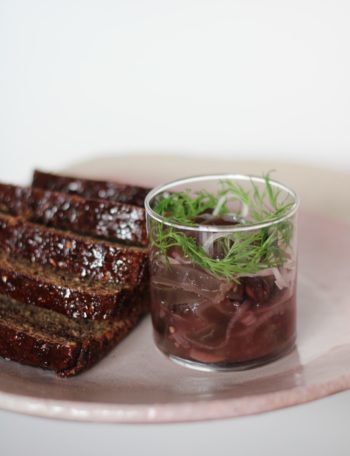
The slices of eggplant in the cup are inspired by traditional pickled herring.Photo: Piritta Kaartio
My good friend, Michelin-starred chef Jouni Toivanen, developed a vegan version of pickled herring, and I thought it would fit this article perfectly, so here it is. You can enjoy these with other starters, or in a sandwich on malt bread with boiled egg.
- 500 g eggplant cut into 2 x 2 x 5-cm pieces
- 3 dl water
- 120 g sugar
- 100 g 10–12% vinegar
- 5 tsp black pepper
- 1 star anise pod
- 1 tsp mustard seeds
- 1 bay leaf
- 1/2 red onion, thinly sliced
- 2 tsp salt
- 1 garlic clove, sliced
- 4 g grated horseradish
Put all ingredients except eggplant into saucepan and bring to a boil. Once boiled, let it steep for one hour. Add eggplant pieces and gently boil for eight minutes. Cool in jars. These keep refrigerated for months if the glass jars are sterilised before use.
Warm, foresty holiday drink (glögg)
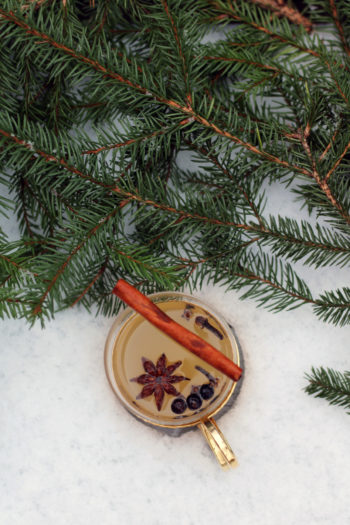
Mulled wine is most often red, but other varieties do exist.Photo: Piritta Kaartio
Traditionally Finnish glögg is made with currant juice and spices with spirit or wine. This recipe is white glögg, something like North American hot apple cider. This recipe is alcohol-free, but you can add a dash of rum or other spirits if preferred. Spices can be varied, but cinnamon, cloves and ginger are generally associated with the holiday season. I wanted this drink to have a Finnish forest feel, so alongside the usual spices I’m using tastes from the forest.
Our five-year-old son loves to collect spruce buds at the summer cottage by the sea in southern Finland. I pick them up and freeze them for later use. In this particular recipe, we love the evergreen taste of spruce buds, which reminds us of the woods and summer. You can also enjoy an iced version of glögg in warmer climates, and you can substitute rosemary or thyme for the spruce buds.
- 1 litre cold-pressed apple juice
- 3 cinnamon sticks
- 1 tsp cloves
- 1 tsp juniper berry
- 1 star anise
- 5 cm fresh ginger
- 4 tbsp honey
- Handful of spruce buds or 2 springs of rosemary and/or thyme
Peel the ginger and slice it thinly, add spices and apple juice, and cook over medium heat for five minutes. Add honey and spruce buds and let it steep for ten minutes. If you want a more flavourful result, the glögg can be chilled with spices overnight and then heated up again. Strain the glögg, pour into mugs and enjoy.
Chocolate-dipped gingerbread cookies
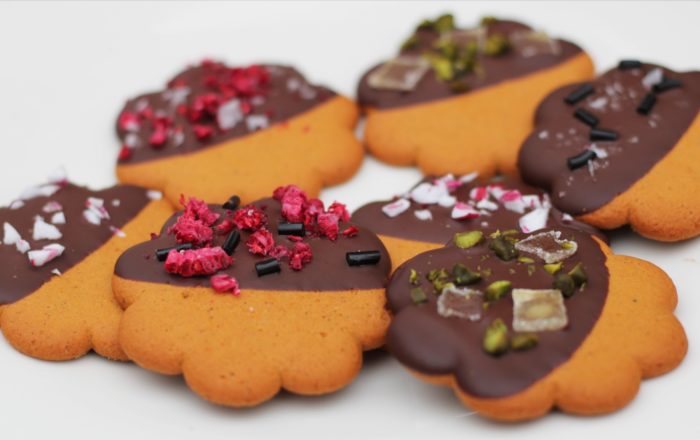
Gingerbread and chocolate form a perfect combination.Photo: Piritta Kaartio
Gingerbread is a fun way to bake with the kids. We all love gingerbread, but with this recipe you can add more taste and different textures and have fun decorating the cookies.
You can buy gingerbread from the store or, better yet, make it yourself [see ThisisFINLAND’s Finnish Christmas cookbook page]. I chose to dip the cookies into dark chocolate, but you can use any kind of chocolate you like. This is like taking your cookies to the next level. I prefer to use high quality chocolate because you can really tell the difference in flavour. As a garnish, you can choose your favourites. Good matches are candied orange peels or white chocolate chips. Chocolate can be melted in a bain-marie, or gently in a microwave.”
- 20 gingerbread cookies
- 200 g good-quality dark chocolate
- Candied ginger and pistachios
- Crushed candy canes and soft liquorice
- Freeze-dried raspberries and salt flakes
- Baking paper
If necessary, cut the garnishes into smaller pieces. Coarsely chop chocolate and place it in a bowl that can be used on top of a saucepan. Add a small amount of water into the saucepan and place the bowl of chocolate on top. Gently heat up the water, but do not boil. Let the chocolate melt gently without stirring too much. Once the chocolate has melted completely, take the pan off the stove.
Dip gingerbread cookies halfway into the melted chocolate and place them on the baking paper. Sprinkle desired garnishes over the chocolate parts and let cool completely.
Cinnamon-roll cake
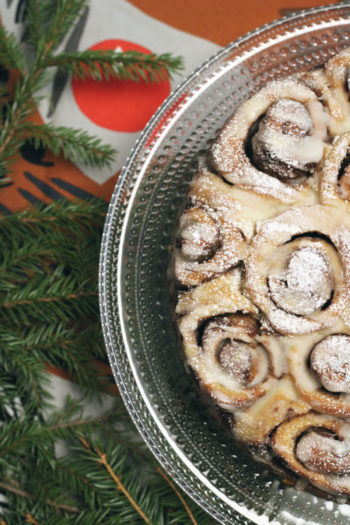
A cinnamon-roll cake is exactly what it sounds like: The same dough as cinnamon buns, only baked into a cake, instead.Photo: Piritta Kaartio
In Finland we call this a Boston cake, but the origin of the name is unknown, and apparently has nothing to do with the US city. It is a cake made of cinnamon rolls (korvapuusti in Finnish). It is great to share, and guests can cut the amount that they want rather eating a whole roll. For this recipe, I replaced the usual cinnamon in the filling with a spice mix that is usually used when baking gingerbread cookies. On top of that, a tangy ginger frosting gives the cake a little extra kick.
- 100 g of butter
- 2 1/2 dl whole milk
- 11 g dry yeast
- 1 dl sugar
- 1–2 tbsp ground cardamom
- 2 tsp salt
- 8 dl all-purpose flour
Filling:
- 1 dl demerara sugar
- 100 g soft butter
- 2 tbsp gingerbread seasoning
- (or a mix of ground cinnamon, ginger, cloves, and dried peel of bitter orange)
Frosting:
- 2 dl icing sugar
- 1 tsp ginger
- juice of half a lemon
- water
Heat milk and butter gently to 42 degrees Celsius and add yeast. Put all other ingredients, except flour, in a mixing bowl. Add flour while mixing with a dough hook, mix for 15 minutes. Let the dough stand for 45 minutes.
Mix the ingredients for the filling.
Roll out the dough with a rolling pin, approximately 30 x 50 cm. Spread the filling onto the dough and roll the dough into a cylinder. Cut the cylinder into 4-cm pieces and put them into a greased cake tin. Leave some room for the dough to proof. Leave it to proof for 45 minutes.
Bake at 200 degrees Celsius for 30 minutes. Meanwhile mix the frosting: Put the dry ingredients into a mixing bowl. Add lemon juice and start to stir. Add water carefully, one teaspoon at a time, and mix. When the frosting’s consistency is like toothpaste, it is ready.
After baking the cake, take it out of the cake tin and let cool completely. Add frosting and enjoy!
